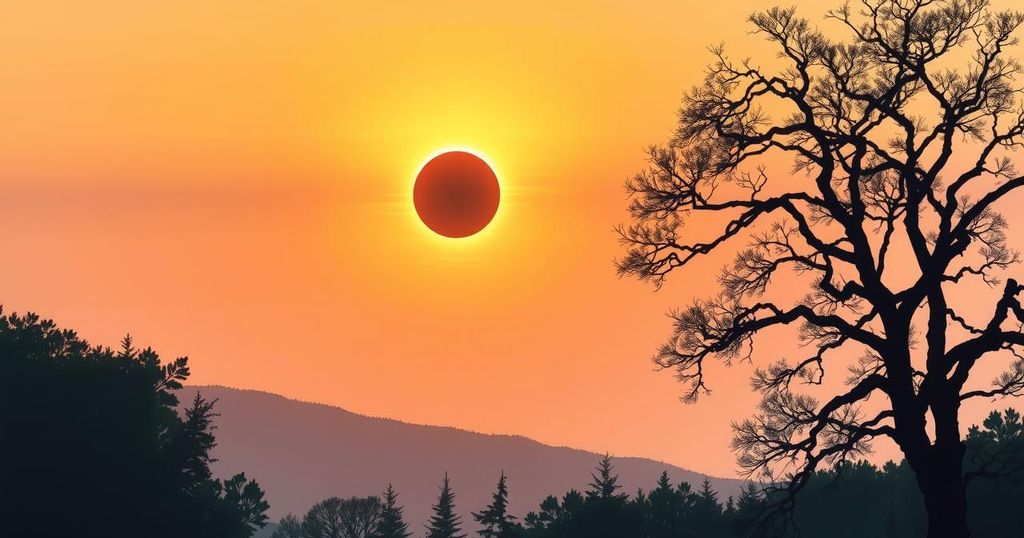Solar Eclipse on March 29: Key Details and Viewing Safety
A partial solar eclipse will occur on March 29, visible in parts of North America, Europe, Africa, and northern Asia, but not in India. The eclipse will follow a specific timing format, and safety precautions must be taken when viewing it, including the use of eclipse glasses. Live streaming options will be available for Indian viewers.
On March 29, this year’s first solar eclipse will take place, visible across parts of North America, Europe, Africa, and northern Asia. This celestial event occurs when the Moon obstructs sunlight from reaching the Earth, leading to either partial or total obscuration. This time, as stated by experts, a partial solar eclipse will be observed as the alignment of the Sun, Earth, and Moon will not be perfect.
During this eclipse, the Sun will be partially blocked by the Moon. NASA specifies that the central shadow of the Moon, where totality would be observed, does not reach Earth, hence no total solar eclipse will be visible. Nevertheless, shadowing of the Sun will occur across various regions in the northern hemisphere.
Unfortunately, the partial solar eclipse will not be visible in India. However, individuals in India can still partake in the experience by viewing live streaming available on various online platforms. Global audiences, particularly in North America, Europe, and parts of Africa, will have the best views.
The eclipse will commence at 2:20:43 PM Indian Standard Time (IST), peak at 4:17:27 PM, and conclude at 6:13:45 PM as reported by Indian Express. Many regions in North America and portions of South America will observe the eclipse during sunrise, while those in western Europe will see it in mid to late morning. Eastern Europe and northern Asia will experience it in the afternoon or early evening.
It is critical to exercise caution while observing the solar eclipse. Viewing the Sun directly can cause serious eye damage, so one should utilize safe solar viewing glasses or handheld solar viewers. Regular sunglasses are inadequate for this purpose. Furthermore, it is important not to observe the eclipse through optical devices such as telescopes or binoculars without proper solar filters, as they can lead to severe eye injuries due to concentrated rays, according to NASA.
In summary, the partial solar eclipse on March 29 will provide a unique opportunity to witness a beautiful celestial event, though it will not be visible from India. The eclipse will occur during specific times and locations, with safety measures crucial for those who choose to observe it. By utilizing safe viewing methods and adhering to guidelines, viewers can fully appreciate this remarkable phenomenon.
Original Source: www.hindustantimes.com




Post Comment